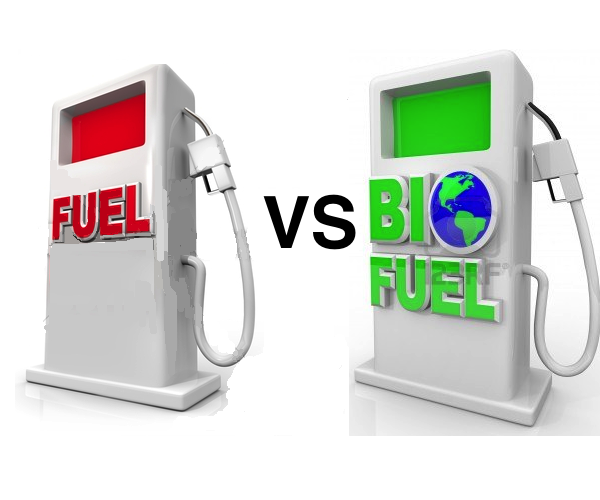So I was watching the Superbowl game on Sunday (ok I admit I am more into commercials than the game itself since my Giants team was not involved), when I saw the Dodge Ram truck commercial “God Made a Farmer” and I thought about the recent 2013 Renewable Fuel Standards proposal by the US Environmental Protection Agency (EPA).
Yes, my brain is weird, I know.
The farm crop and biofuel industries are probably thanking God last week when the EPA announced its proposed 2013 volume and percentage standards for biomass-based diesel (1.28bn gal, 1.12%), advanced biofuel (2.75bn gal, 1.60%), and cellulosic biofuels (14m gal, 0.008% in ethanol equivalent volumes). Total renewable fuels volume requirements proposed for 2013 is at 16.55bn gallons or 10% of all gasoline and diesel produced or imported in 2013 using projections and assessments from the Energy Information Administration (EIA).
————————————————————————————–
2013 2012
Cellulosic biofuel 14m gal 8.65m gal
Biomass-based diesel 1.28bn gal 1bn gal
Advanced biofuel 2.75bn gal 2bn gal
Renewable fuel 16.55bn gal 15.2bn gal
—————————————————————————————
*All volumes are ethanol equivalent except for biomass-based diesel
The volumes are the minimum that would need to be consumed in the US. The proposal will be open for a 45-day public comment period and EPA will consider feedback from a range of stakeholders before the proposal is finalized.
The Energy Independence and Security Act of 2007 (EISA) established the RFS2 program and the annual renewable fuel volume targets, which steadily increase to an overall level of 36bn gallons in 2022. To achieve these volumes, EPA calculates a percentage-based standard for the following year. Based on the standard, each refiner and importer determines the minimum volume of renewable fuel that it must ensure is used in its transportation fuel.
While the EPA’s 2013 RFS proposal waives the cellulosic biofuel requirement from 1bn gallons to 14m gallons, the EPA still retains overall advanced biofuel and renewable fuel requirements. The increase in 2013 cellulosic biofuel volume standard was especially contentious given a lawsuit filed by the American Petroleum Institute (API) last year against the EPA challenging the agency’s 2012 RFS requirement that refiners and importers of gasoline and diesel must use 8.65m gallons of cellulosic biofuels despite its lack of commercial production and supply.
The API wants the EPA to base their RFS standard estimate on at least two months of actual cellulosic biofuel production in the current year when establishing the mandated volume for the following year.
“This approach would provide a more realistic assessment of potential future production rather than simply relying on the assertions of companies whose ability to produce the cellulosic biofuel volumes EPA hopes for is questionable.” – API
A recent ruling by the US Court of Appeals for the District of Columbia agreed with the API’s challenge that EPA had overstepped its bounds in setting the volume requirements for cellulosic biofuel.
“We agree with API that EPA’s 2012 projection of cellulosic biofuel production was in excess of the agency’s statutory authority. We accordingly vacate that aspect of the 2012 RFS rule and remand for further proceedings consistent with this opinion.”
However, the Court of Appeals also rejected API’s challenge to EPA’s refusal to lower the applicable volume of advanced biofuels for 2012.
“The agency [EPA] adequately grounded its determination in historical data on sugarcane ethanol imports and biodiesel production as well as governmental and non-governmental projections for future production of those fuels. We find especially relevant EIA’s projection of 300m gallons of sugarcane ethanol imports for 2012 and EPA’s estimation of 2.4bn gallons in US biodiesel production capacity. These data plausibly suggest that some combination of the two sources of advanced biofuels will be available to make up for the shortfall in cellulosic biofuel.”
According to the EPA, their proposed 2013 cellulosic biofuel volume requirements is consistent with the ruling.
“We believe the sum of these volumes expected by the specific companies noted in the proposal (14m gallons for cellulosic biofuel) is a reasonable representation of expected production.This projection reflects EPA’s current estimate of what will actually happen in 2013, and we will consider public comments before setting the final cellulosic standard.” – EPA
Of course, the biofuel industry welcomed the EPA’s 2013 RFS proposal. The Renewable Fuels Association (RFA) noted that the 2013 RFS requirements will inject larger volumes of biofuels into the US fuel supply and spur more rapid transition to domestically-produced renewable fuels.
“We are concerned, however, that the proposed 2013 advanced biofuel standard will open the door even wider to imports of more expensive Brazilian sugarcane ethanol.” – RFA
The American Fuel & Petrochemical Manufacturers (AFPM), meanwhile, noted on a press release that the EPA’s proposed renewable fuel volumes continue to be unrealistic.
“We are disturbed that EPA is mandating 14m gallons of cellulosic ethanol when zero gallons are available for compliance as of today. In addition, we are surprised that EPA has not chosen to adequately consider a recent U.S. Court of Appeals for the District of Columbia’s decision to vacate the agency’s 2012 cellulosic biofuel mandate.” – AFPM
The AFPM also commented on EPA’s proposal to address RIN fraud, as well as the Agency’s decision to maintain its requirement for 1.28bn gallons of biodiesel to be blended into the US’ fuel supply.
The EPA announced a proposed rule geared towards promoting greater liquidity in the RIN market that assures reasonable oversight of RIN generation and assures use of the required renewable fuel volumes.
RINs are generated by renewable fuel producers and importers, and represent volumes that meet the requirements for renewable fuel under the RFS program. Once RINs have been generated, they can be transferred between parties and used by petroleum refiners and importers to show compliance in their volume obligations.
Unfortunately, the past two years have seen several cases of fraudulently generated RINs resulting in difficulty for smaller renewable fuel producers to sell their RINs.
“We are encouraged that EPA finally released a proposal aimed at protecting refiners from the rampant fraud in the biodiesel market. We have yet to determine whether or not the proposal is adequate, but we are certainly pleased the Agency has finally moved forward with a proposed regulatory solution.” – AFPM
As far as the proposed biodiesel volume requirement goes, the AFPM said it is unrealistic to assume that the biodiesel industry will actually produce 1.28bn gallons of real biodiesel this year given that 140m biodiesel credits created last year turned out to be fraudulent.
The Biotechnology Industry Organization (BIO), where several of its members are responsible for the fast development of the cellulosic biofuel industry, noted that oil companies and their allies will just continue to use every regulatory and legalistic ploy “to block the growth of the renewable fuel industry and attempt to preserve their control of the fuel market.”





One response to “Biofuel battle heats up (more)”
Biofuel policies are a gigantic disaster that pulls funding from more viable technologies, especially sustainable chemicals. Most technologies go from niche to commodity over a period of well understood commercial stages. Never has a technology simply skipped these stages. Why in earth does our government, the public and investors think that this will be bypassed as some singularity in global history?